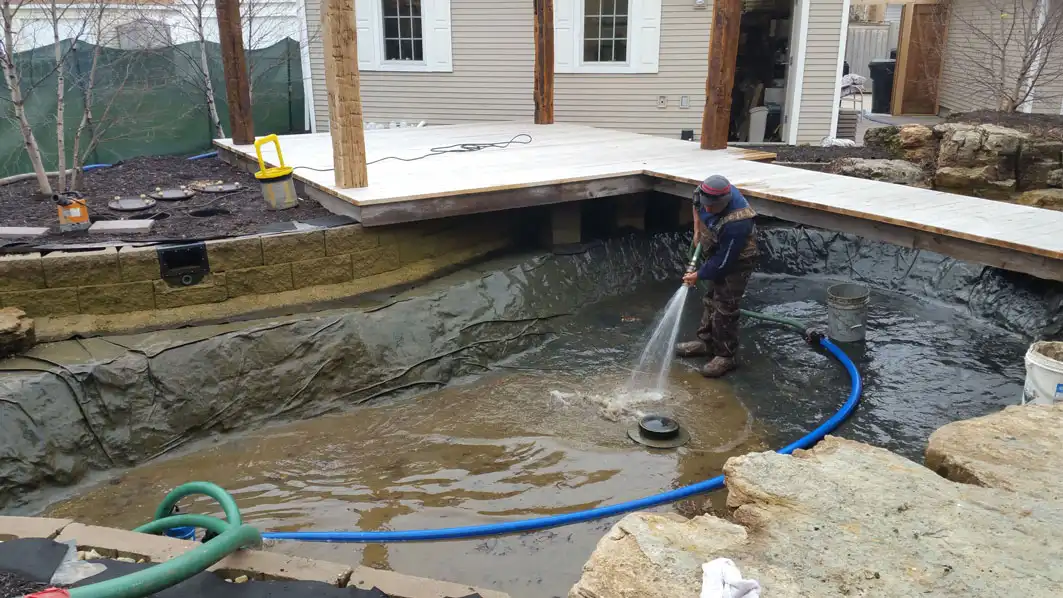Top 5 Things to Know About Submersible Water Pumps and Electricity
November 11, 2019, 0 CommentsDespite their ground-ready, durable and insulated construction, submersible water pumps still present severe hazards for homeowners and should never be used in ponds meant for swimming or human immersion. The problem is simple: electricity and water do not mix. As such, installing an electric submersible water pump for water gardens, natural ponds, or pools requires great skill and experience to avoid electrocution.
Manufacturers design submersible pumps to be safe. For instance, they encase them in cast-iron housing designed to isolate the electrical and working parts of the unit. All cables are shielded and sealed by standard rubber. However, both the casing and the rubber shielding does not guarantee that the submersible water pump will never have any contact with water.
1. Water Seals
The rubber water seals on a submersible pump contain no adhesive. Instead, they form the seal due to a crimping method that tightens components within the pump. The seal insulates the inside of the pump from water, humidity, and outside air.
While this produces a high level of insulation, occasional seal failures can occur. A tiny malfunction can bring the inside of the pump into contact with the water garden or natural pond water. The result of this malfunction would be electrified water inside the pond.
2. The Cables
Like the main components of the pump, manufacturers go to great lengths to properly seal the cables. For instance, they will fill gaps with epoxy to prevent water from invading the unit. They also wrap the cables in a neoprene, which is both air and watertight.
Epoxy is incredibly effective at forming a waterproof seal. This seal will not fail unless it is subjected to some form of impact that would cause it to crack. If the seal cracks, water might get into the cable. The same is true for neoprene.
3. Regular Outlets vs. GFCI Receptacles
Both the National Electric Code (NEC) and OSHA require that all homes now contain GFCI receptacles in areas where water exists or potentially exists. These areas include bathrooms, kitchens, utility rooms, garages, and anywhere outside. GFCI receptacles prevent electrocution by cutting off the power source when an unusual increase or “leakage” in power, like that caused when water comes into contact with electricity, is detected.
Unfortunately, many older homes do not have GFCI receptacles. As a result, plugging an electric water pump into a regular outlet can make it vulnerable to a power surge. It can also increase the risk of electric shock. Therefore, if you use an electric pump, you must make sure that you plug it into a GFCI receptacle or replace your old outlet.
4. Freezing Temperatures During the Winter
During the winter, it is a good idea to remove the water pump from your water garden or natural pond. Winters in Illinois produce frigid temperatures that can plummet below zero. As a result, the water in a natural pond or water garden may stay frozen throughout the season.
Frozen water can take its toll on a submersible water pump. Just one freeze can cause the casing or the cabling to crack open, exposing the electrical parts. You may not notice the cracks due to the multilayers of the casing. Therefore, when you turn on the pump in the springtime, you may be vulnerable to electric shock.
5. Abrasives and Heavy Objects
Since most natural ponds or water gardens contain rocks, plants, sand, and other objects, it is important to ensure that they do not come into contact with the water pump.
When placing your pump, be sure to isolate it from any heavy rocks, sharp objects, or metal objects. Also, if you use sand, position the pump so that it is filtering the least amount of sand possible. Since sand is abrasive, it can damage the inner parts of the pump over time.
6. Never swim or wade in a pond with a Submersible Water Pump
You should never swim or wade in a pond or pool with a submersible water pump. Even though these pumps are designed with many safety features, it is not worth the risk. There are special pumps designed for swimming pools and ponds that do not carry this risk. If you need to enter your pond or pools with a submersible water pump to retrieve something or perform routine maintenance it is critical that you turn off the electricity to the submersible pump and enter with caution.
Need Help with Your Water Garden? Contact Us Today!
If you are getting ready to build your water garden project, then Reflections can help. We offer a wide range of features and options to help you create the perfect serene water garden for your backyard.
To find out more about our products and services, call us today at (815) 955-4911 for a consultation.


0 Comments